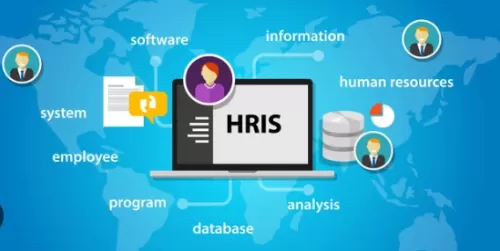Understanding Telemedicine: Common Questions Answered
Telemedicine is revolutionizing healthcare by making medical services more accessible and convenient. Through the use of technology, patients can consult with healthcare professionals remotely, saving time and enhancing the overall patient experience. Here are some frequently asked questions about telemedicine and their answers:

1. What is Telemedicine?
Telemedicine involves the use of digital communication tools, such as video calls, phone calls, and messaging, to provide healthcare services remotely. It allows patients to consult with doctors, receive diagnoses, and get treatment plans without needing to visit a medical facility in person.
2. How Does Telemedicine Work?
Telemedicine typically works through the following steps:
Appointment Scheduling: Patients schedule an appointment through a telemedicine platform or their healthcare provider’s website.
Virtual Consultation: At the scheduled time, the patient and healthcare provider connect via a secure video call or phone call.
Diagnosis and Treatment: The healthcare provider assesses the patient’s condition, provides a diagnosis, and recommends treatment or further tests if necessary.
Follow-Up: Patients can have follow-up consultations and receive ongoing care through the telemedicine platform.
3. What Are the Benefits of Telemedicine?
Telemedicine offers several advantages, including:
Convenience: Patients can consult with healthcare providers from the comfort of their homes, reducing travel time and costs.
Accessibility: Telemedicine makes healthcare more accessible to people in remote or underserved areas.
Time Savings: Reduced waiting times and the ability to schedule appointments more flexibly.
Continuity of Care: Easy access to follow-up appointments and continuous monitoring of chronic conditions.
Safety: Minimizes the risk of exposure to infectious diseases, especially important during pandemics.
4. What Types of Services Can Be Provided Through Telemedicine?
Telemedicine can cover a wide range of medical services, including:
Primary Care Consultations: General health check-ups, management of chronic conditions, and minor illnesses.
Specialist Consultations: Access to specialists in fields like dermatology, psychiatry, and cardiology.
Mental Health Services: Therapy and counseling sessions with licensed mental health professionals.
Prescription Management: Issuance and renewal of prescriptions.
Follow-Up Visits: Ongoing monitoring and follow-up care after treatments or surgeries.
5. Is Telemedicine Secure and Private?
Yes, reputable telemedicine platforms use secure, encrypted communication channels to protect patient privacy and comply with regulations such as the Health Insurance Portability and Accountability Act (HIPAA). Patients should ensure they use trusted platforms and verify the credentials of healthcare providers.
6. What Technology Do I Need for Telemedicine?
To participate in a telemedicine consultation, you generally need:
A Computer, Smartphone, or Tablet: With a camera and microphone for video calls.
Stable Internet Connection: Reliable internet access to support smooth video communication.
Telemedicine App or Platform: Some providers may require you to download a specific app or use a particular platform for consultations.
7. How Do I Prepare for a Telemedicine Appointment?
To prepare for a telemedicine appointment, follow these steps:
Test Your Technology: Ensure your device is working correctly and your internet connection is stable.
Prepare Your Medical Information: Have your medical history, current medications, and any symptoms or concerns ready to discuss.
Find a Quiet, Private Space: Choose a location where you won’t be disturbed during the consultation.
Write Down Questions: List any questions or issues you want to discuss with the healthcare provider.
8. Are Telemedicine Consultations Covered by Insurance?
Many insurance plans cover telemedicine services, especially as the demand for remote healthcare has increased. Coverage can vary, so it’s important to check with your insurance provider to understand the specifics of your plan and any out-of-pocket costs.
9. What Are the Limitations of Telemedicine?
While telemedicine offers many benefits, it has some limitations:
Physical Examinations: Some conditions require in-person physical exams or procedures that can’t be conducted remotely.
Technology Barriers: Patients without access to the necessary technology or internet may find it challenging to use telemedicine services.
Regulatory Issues: Telemedicine regulations can vary by state or country, affecting the availability of services.
10. How Do I Find a Telemedicine Provider?
To find a telemedicine provider, you can:
Check with Your Primary Care Physician: Many traditional healthcare providers offer telemedicine services.
Research Online: Look for telemedicine platforms or healthcare networks that provide remote consultations.
Consult Your Insurance Provider: They can recommend covered telemedicine services and providers within your network.
Conclusion
Telemedicine is transforming the way healthcare is delivered, offering increased convenience, accessibility, and safety for patients. By understanding how telemedicine works, its benefits, and how to prepare for a virtual consultation, patients can make the most of this innovative approach to healthcare.

Is Your Business Really Safe-What Every Owner Should Know About Modern Security

Transforming Customer Support with Cloud Based Call Center Solutions

Unlocking Opportunities: The Rise of Data Analysis in Today Job Market

A New Era of Interactive Experience

Unlocking the Future of Graphic Design: The Power of Learning in AI

Advancing Your Career with Data Analysis: Tools, Software, and Certifications

Maximizing Your Business Reach: A Guide to Digital Marketing and Online Strategies







